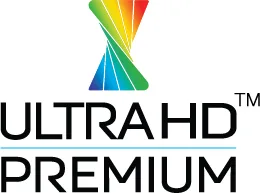We met with the UHD Alliance at NAB 2016 to get any updates since their big news at CES, where they issued requirements for content creation and displays, plus a certification program.
According to Victor Matsuda, who works for Sony but serves as the communications manager for the Alliance, there are now about 30 certified TVs in the market and around 200 models. This includes derivative models that have the same basic panel and chassis, but may have different power supplies or frame rate support.
Just before NAB, the UHD Alliance announced a new certification program for UltraHD Blu-ray disc players. That means the Alliance can now certify TVs, content, content services and playback devices for UltraHD content.
Panasonic has been the first to launch an UltraHD Blu-ray player last November in Japan and will soon market it worldwide including two new Warner Bros titles. Samsung is selling its own player and others are expected soon. Four studios have created 26 UltraHD Blu-ray disc titles so far and some have been certified. By the end of April, Matsuda says the number of studios mastering Ultra Blu-ray discs will increase to six. Sony DADV is now mastering these discs in the optional Dolby Vision format.
Matsuda also mentioned some needs for the HDMI association to consider. It turns out that with HDMI 2.0a, there is a flag to signal that the content is HDR. This is carried in the SEI part of the stream. Apparently, this flag is either on or off, but with HLG coming on the scene, there needs to be a way to also indicate what type of HDR the content is formatted in. This may be accomplished with a software upgrade, but it requires a number of other industry documents to be upgraded at the same time, such as CEA 861. As a result, some are worried that such an upgrade will be postponed until the release of HDMI 2.1, delaying the roll out of HLG content and hardware. HDMI 2.1 will apparently require new silicon as well.
Matsuda said that the Alliance has been focused so far on phase 1 activities, which included content, playback and display. They will increasingly turn toward solving UHD and HDR for live broadcast, working with the UHD Forum, SMPTE, CTA and others.
We also asked about the controversy that Vizio stirred up by complaining that the certification test methods are not transparent and that uncertified TV performance can sometime exceed that of certified TVs. Matsuda said that Vizio never contacted them to discuss or ask about certification and initiated this through the media only. The Alliance stands ready to share info with Vizio should they ask for it, concluded Matsuda. –CC

